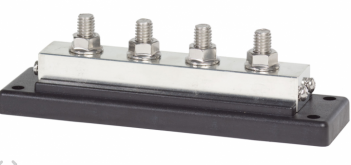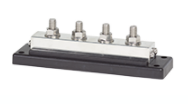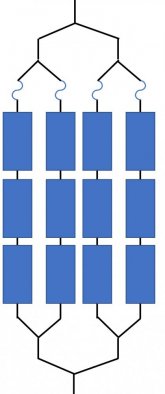If your system is never inspected, no one will know if you have rapid shut down or not, but if something goes wrong, you may not only injure a fireman on your roof, you could lose your insurance coverage. This is the sticky part. If you ask your local officials about the law, they will know you are doing something, and will expect you to pull permits etc. I could not risk it here, I had to pay a professional to install my solar panels up on the roof because the building codes here are crazy. The guy I used has done over 100 sites in this area, and he still had to go back and refile one of the document again. The permitting and all did add nearly $2,000 to the cost of my system, but the fine if someone complained about my panels and they found no permit for it, would have been way more. And if something shorted out and started a fire, my insurance would be voided. I would always recommend you get the building permit and follow the local codes. If it is a "portable" system, and the panels are separate from your building, then you can usually just DIY it and probably not have an issue. In my area, the rapid shut down it only required if the panels are on, or within 10 feet of a living quarters. Not sure it that would count on an attached or detached garage, but I do know a few have done solar panels on a car port without it. The problem is that you can't turn off the sun. Yank out all the wires, and the panels are still making power. If a fireman has to go on your array, they could be exposed to live wires. The idea of rapid shut down is that the lines will be powered down at or very near the panels, and clearly marked where they might still be live. I am in the north end of Los Angeles County, 30 miles north of Hollywood, and it is required here.
With 12 panels, in 3S 4P you need 4 of the 10 amp fuses. You maximum current should never exceed the ISC 5.7 amps x 4 or 22.8 amps, so #10 awg wire is safe from a capacity standpoint, but depending on the length of the run, you may want to step up to a #8 to reduce loss in the cables. Most MC4 connectors though, can't really take a wire that large. It is always good to use parts that can handle more power than you need. The 40 amp rated connectors should last a good long time when running under 2 amps. With most cheaper electronic components, we tend to run them around 50% of rating. 100 amps on a 200 amp BMS, things like that. With wire and connectors, you can run them closer, but it never hurts to have less resistance and heat buildup with higher rated parts.
A 1000 watt inverter is still able to make a decent amount of power. Running that in an extension cord is not a permanent solution. Again, if this a "portable system" you might get away with it, but this is a safety concern. Your description sounds like that cord is outdoors. I get nervous having an extension cord running out for Christmas lights for a month. I always have it plugged into a ground fault protector, and it has tripped a few times, just from morning dew on the cables. Extension cords are considered a temporary use item. You can certainly use that for testing and running things for a bit, but if it is going to be used for weeks, you should run some permanent wiring. How long is the run outside? I have not had to run any outdoor feeds here, but I seem to remember the code called for a feeder line to be buried 18 inches deep. One of my friends ran a feed out to a hot tub in his back yard. You can get some 3 x #10 UF cable at most hardware stores like a Home Depot etc. Here is an Amazon listing for 50 feet. This is overkill for your current system, but if you ever expand, you won't need to dig a new trench.
10/3 UF-B x 50' Underground Feeder Cable - - Amazon.com
www.amazon.com
This will handle up to 30 amps of 120/240 split phase power.














